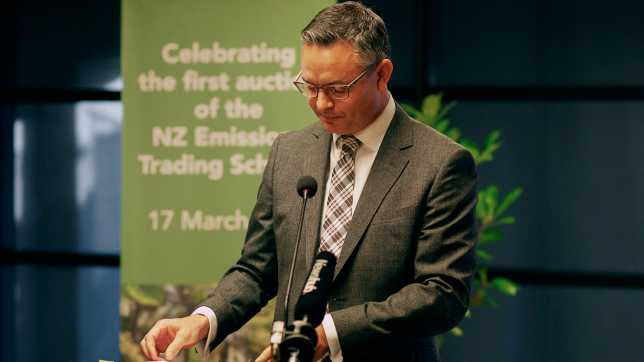New Zealand’s carbon prices jumped more than 10% in response to proposed changes to Emissions Trading Scheme (ETS) settings.
The spot price of New Zealand Units (NZUs) trading on Jarden’s Commtrade platform reached a high of more than $82 on Wednesday morning, up from about $72.50 the day before. Early this afternoon, the NZU price settled back slightly to $81.
The spike occurred after the Climate Change Commission released its recommendations on possible changes to ETS settings, which included lowering the number of NZUs available at auction and massively hiking the trigger price at which the cost containment reserve is released.
The 2022 reserve, triggered at a price of $70 a unit, was exhausted at the June ETS auction, which had a clearing price of $76. This means the remaining two auctions of the year will be held without any cost containment reserve.
The same thing happened in 2021 when the reserve was exhausted partway through the year.
Under existing settings, the government had planned to increase the trigger price to $78.40 in 2023, rising to $98.34 in 2025. The commission recommended a trigger price of $171 in 2023 for 2.9 million NZUs and $214 for another 5.1m units.
The commission also recommended the reserve, or floor price below which NZUs won’t be released, be increased. It is now set for $30, rising to $32.10 next year. The commission recommended a reserve price of $60 in 2023, rising to $75 in 2027.
It also wants to restrict the supply of carbon units.
Read: Carbonz – what is it and how does it work?
Under current settings, the government has allocated 25.6m NZUs for auction in 2023 (including the cost containment reserve), dropping to 21.7m NZUs in 2026. The commission wants that to drop to 24.4m NZUs in 2023 and 18.7m in 2026.
Those industries that emit greenhouse gas emissions and are registered under the ETS, must use NZUs to match their emissions.
Nigel Brunel, head of commodities at Jarden, said the changes recommended by the commission were significant and the market had responded accordingly.
“The market saw that and said ‘Okay, they are just recommendations, but the government tends to follow those recommendations.’
“They’ve really, really put the emphasis back onto the market.”
The increase on the secondary market today was the biggest move since the carbon price dropped from its peak of $86.25 in February, Brunel said.
“This is probably one of the biggest jumps I can recall. Probably in the top two or three.”
Salt Funds Management’s carbon fund, which is listed on the NZX, also had a spike, with its share price up more than 10% on Wednesday afternoon.
In a statement issued through the Science Media Centre, distinguished professor Robert McLachlan, of the school of mathematical and computational sciences at Massey University, said the commission’s advice was a strong response to the climate crisis.
“The price changes are significant,” he said, pointing to the trigger for releasing reserve units going from $78.40 in 2023 to two triggers of $171 and $214.
“That level would be sufficient to greatly accelerate decarbonisation of industry – at Fonterra’s milk powder plants, for example, currently scheduled to be burning coal until 2037.”
Climate Change Minister James Shaw welcomed the commission’s advice and said officials will be considering its recommendations.
The government is recycling proceeds from the ETS into the Climate Change Response Fund, a $4.5 billion fund set up to pay for initiatives in the emissions reduction plan.










